Why do people use SCORM?
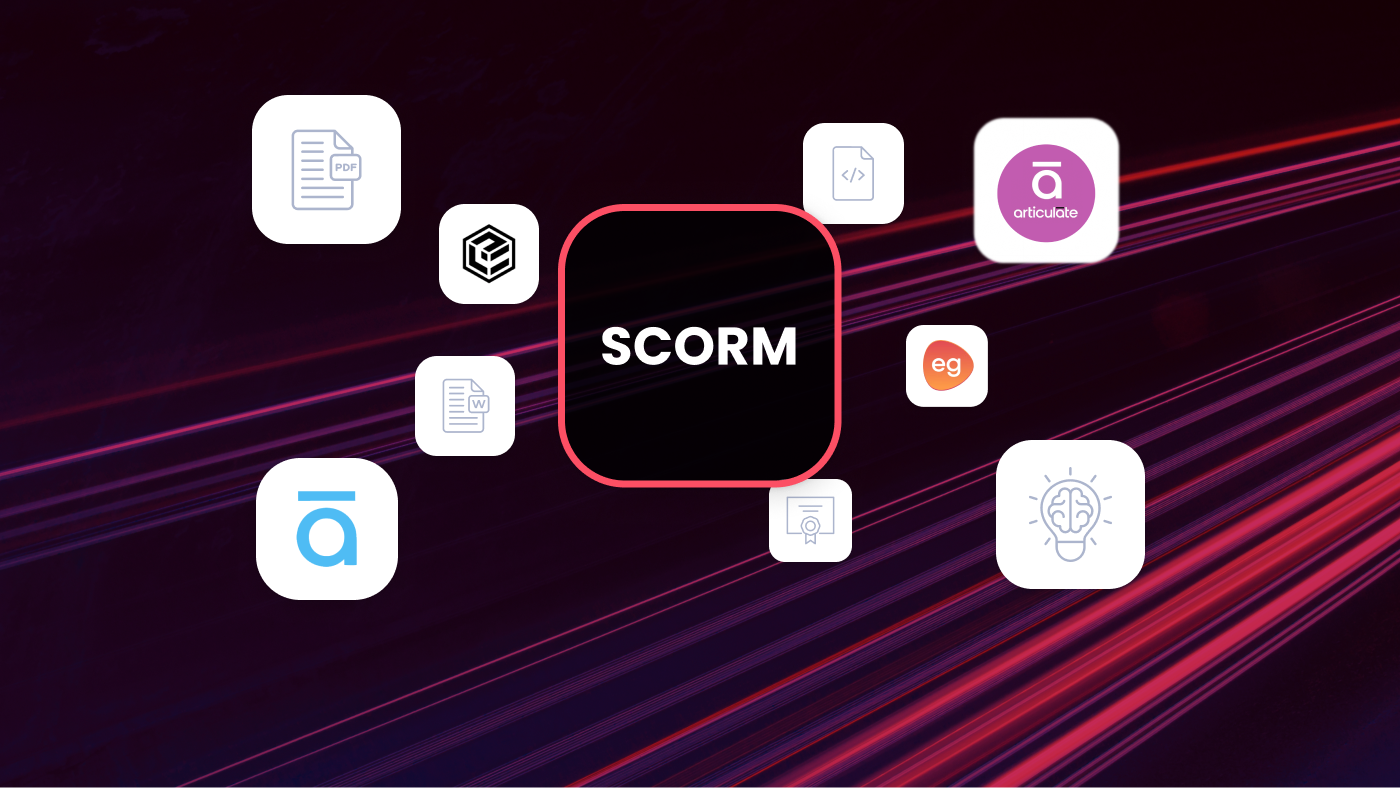
Published by
Published on
Read time
Category
Picture this: It's 2025, and you're evaluating cutting-edge learning management systems packed with AI recommendations, microlearning capabilities, and sleek interfaces. Yet somehow, the conversation keeps coming back to SCORM - a standard that first emerged in the early 2000s.
Why does this happen? Despite being older than the iPhone, SCORM remains the backbone of corporate e-learning. Over 90% of learning management systems support SCORM, making it the closest thing to a universal language in e-learning technology.
But here's what most people don't tell you: SCORM isn't popular because it's perfect. It's popular because it works, and it works reliably across thousands of different learning platforms. In a world where training budgets are tight and compatibility headaches can derail entire projects, that reliability matters more than flashy features.
This guide will give you the straight truth about why organizations choose SCORM, what it does well, where it falls short, and how it fits into today's AI-enhanced learning ecosystems. You'll walk away knowing exactly when SCORM makes sense for your projects - and when it doesn't.
What is the primary purpose of SCORM?
Before we dig into why people use SCORM, let's establish what it actually does. SCORM stands for Sharable Content Object Reference Model, but that technical name doesn't tell you much about why it matters.
Think of SCORM as a translator. Before SCORM existed, e-learning content was like speaking different languages. A course built for one LMS couldn't run on another. You'd create training content for Blackboard, and it wouldn't work in Moodle. Build something for your custom platform, and you can't move it anywhere else.
SCORM solved this by creating a common set of rules - technical specifications that both content and learning management systems could follow. SCORM defines how content should be packaged, how it communicates with the LMS, and how learning progress gets tracked and reported.
The beauty is in the standardization. Once content follows SCORM rules, it should work on any SCORM-compliant platform. ‘Should’ being the key word - we'll get to the reality of that promise later.
SCORM's primary purpose is simple: make e-learning content portable. Create once, deploy anywhere. That's the promise that keeps organizations coming back, even as newer standards emerge.
Why do people use SCORM? The real-world rdrivers
The numbers tell a clear story. According to a Software Advice survey, 62% of businesses use SCORM courses for training in their LMS. But statistics don't explain the "why" behind these decisions. Let's look at the real reasons organizations choose SCORM.
Platform independence is 2verything
Your company just spent six months building a comprehensive onboarding program. Then your IT department announces they're switching to a new LMS. Without SCORM, you'd be looking at rebuilding everything from scratch.
SCORM content runs on virtually any modern LMS. Moodle, Blackboard, Canvas, TalentLMS, Docebo - they all speak SCORM. This portability protects your content investment and gives you negotiating power with LMS vendors.
The path of least resistance
Here's something nobody mentions in the marketing materials: choosing SCORM is often the easiest decision. When you're managing enterprise training with tight deadlines and tighter budgets, you pick the option that won't cause problems.
SCORM authoring tools are mature and reliable. Developers know how to build SCORM content. Your LMS vendor guarantees SCORM support. IT departments approve SCORM implementations because they're predictable.
Cost protection matters
Training content represents a significant investment. A single comprehensive course can cost $20,000 to $50,000 to develop. Multiply that across an organization's training catalog, and you're looking at hundreds of thousands or millions in content assets.
SCORM acts as insurance for these investments. Even if you switch LMS platforms, change vendors, or merge with another company, your SCORM content retains its value. You're not locked into any single technology provider.
Compliance and reporting requirements
Corporate training isn't just about learning - it's about proving learning happened. Compliance officers need documentation. HR departments need completion reports. Auditors need proof that employees completed required training.
SCORM provides standardized tracking that satisfies these requirements. Every SCORM course reports completion status, time spent, and quiz scores in a consistent format. This data feeds directly into compliance reporting systems.
Risk mitigation over innovation
Organizations often choose SCORM because it's the safe choice. While newer standards like xAPI offer more advanced features, they also introduce uncertainty. SCORM has twenty years of proven performance in enterprise environments.
When you're responsible for training thousands of employees across multiple departments, "boring but reliable" beats "innovative but risky" every time. SCORM won't surprise you with compatibility issues or unexpected behavior.
What are the advantages of SCORM?
Now that we understand why organizations choose SCORM, let's examine what it does well. SCORM's advantages aren't theoretical - they're practical benefits that solve real business problems.
Universal compatibility
SCORM's biggest strength is also its simplest: it works everywhere. Over 90% of learning management systems support SCORM out of the box. This compatibility extends beyond just corporate LMS platforms to include educational systems, government training platforms, and specialized industry solutions.
This universality means your training team can focus on creating great content instead of worrying about technical compatibility. You can evaluate LMS options based on features and cost, not whether they'll support your existing content library.
Future-proof content investment
Training content has a longer lifespan than most people realize. A well-designed compliance course might serve your organization for five to ten years. Product training modules get updated but rarely rebuilt from scratch. Leadership development programs become part of your institutional knowledge.
SCORM protects these long-term investments. Content created in SCORM format today will still run on platforms built five years from now. While technology vendors come and go, SCORM provides continuity for your training assets.
Simplified vendor management
Managing relationships with multiple technology vendors is complicated enough without adding compatibility concerns. SCORM eliminates one major variable from vendor selection and contract negotiations.
Your content development team can work with their preferred authoring tools. Your LMS administrator can choose platforms based on features and price. Your procurement team can negotiate contracts without worrying about technical lock-in. Everyone operates independently, while the SCORM standard ensures everything works together.
Standardized learning analytics
SCORM provides consistent, predictable learning data across all your training content. Every SCORM course reports the same basic metrics: completion status, time spent, quiz scores, and progress indicators.
This standardization makes reporting straightforward. Your training team can compare completion rates across different courses. HR can generate organization-wide training reports. Compliance officers can demonstrate training completion to auditors. The data format remains consistent regardless of content source or creation method.
Mature development ecosystem
Twenty years of industry adoption have created a robust ecosystem around SCORM. Authoring tools like Articulate Storyline, Adobe Captivate, and Lectora make SCORM content creation accessible to non-technical users. Development agencies understand SCORM requirements. LMS platforms compete on SCORM feature completeness.
This maturity translates to predictable project timelines, known development costs, and reliable technical support. When you encounter SCORM issues, solutions are usually well-documented and widely understood.
Cost-effective content distribution
Once content is packaged in SCORM format, distribution costs approach zero. You can deploy the same course to ten learners or ten thousand learners without additional content licensing fees. SCORM courses don't require ongoing subscription fees or per-learner charges.
This scalability makes SCORM particularly attractive for large organizations. The initial investment in content development gets amortized across all users, reducing per-learner training costs significantly.
Is SCORM good? The honest assessment
SCORM isn't perfect, but "good" depends on your specific needs and alternatives.
Where SCORM excels
SCORM delivers reliable content portability across learning management systems. For traditional corporate training - compliance courses, product training, structured curriculum - it works consistently.
The predictability factor matters. Completion tracking works. Quiz scores transfer accurately. Progress reporting functions as intended. This reliability makes SCORM valuable for mission-critical training programs.
The "create once, deploy everywhere" promise mostly holds true, reducing development costs and vendor dependencies.
Where SCORM shows its age
Cross-domain JavaScript restrictions create deployment headaches when content and LMS exist on different servers. Mobile learning requires additional development effort to handle launching, loading, and tracking issues properly.
Version compatibility remains problematic. SCORM 1.2 and SCORM 2004 don't work well together, and LMS platforms implement SCORM support differently.
SCORM's tracking capabilities feel limited by today's standards. It captures basic completion and scoring data but can't track informal learning, social interactions, or complex learning pathways.
The realistic verdict
SCORM works well for formal, structured training with basic tracking requirements. It's not suitable for cutting-edge learning experiences, complex analytics, or seamless mobile learning.
The key question: does SCORM fit your specific requirements? For compliance, product knowledge, or structured curriculum delivery, probably yes. For adaptive learning experiences, social learning platforms, or data-driven personalization systems, SCORM will hold you back.
SCORM in the age of AI: Modern context
Here's where things get interesting. While SCORM itself doesn't include AI capabilities, it's increasingly being used alongside AI-powered learning systems. The combination creates both opportunities and limitations worth understanding.
How AI enhances SCORM-based learning
AI agents can work with SCORM content in several valuable ways. Learning recommendation engines analyze SCORM completion data to suggest relevant courses to learners. Natural language processing systems can scan SCORM course content to automatically tag and categorize training materials.
Chatbots and virtual assistants can answer questions about SCORM course content, helping learners get unstuck without human intervention. These AI systems access the structured data that SCORM provides to deliver contextual support.
To see how Mindset AI ingests SCORM content, take a look at this page here.
The Future Perspective
Smart organizations are using SCORM as part of broader learning ecosystems that include AI capabilities. SCORM handles content delivery and basic tracking, while separate AI systems provide personalization, recommendations, and advanced analytics.
This hybrid approach acknowledges SCORM's strengths while compensating for its limitations. You get the reliability and compatibility of SCORM with the intelligence and adaptability of modern AI systems. This allows companies to unlock millions of dollars in legacy training content and turn static courses into dynamic, searchable knowledge inside of learning agents that deliver exactly what people need, when they need it.
Conclusion: SCORM's enduring value
After examining SCORM from every angle, here's the bottom line: it endures because it solves fundamental problems that haven't disappeared.
Content portability matters when your organization has invested millions in training materials. Technical reliability matters when you're training thousands of employees across global operations. Cost predictability matters when budgets are scrutinized and every expenditure must be justified.
SCORM isn't perfect, and it's not innovative. But it's practical, reliable, and well-understood. In a business environment where failed technology implementations can cost careers, choosing the proven solution often makes more sense than chasing the latest trend.
The organizations that get the most value from SCORM understand both its capabilities and its limitations. They use SCORM where it makes sense - for formal training delivery and basic tracking - while incorporating other technologies for advanced features.
Looking ahead, SCORM will likely remain relevant for formal corporate training, even as newer standards gain adoption for specialized use cases. The key is matching your technology choices to your actual requirements, not the marketing claims of technology vendors.
Want to learn more about SCORM ingestion possibilities? Take a look at Mindset AI’s solution here.
Book a demo today.


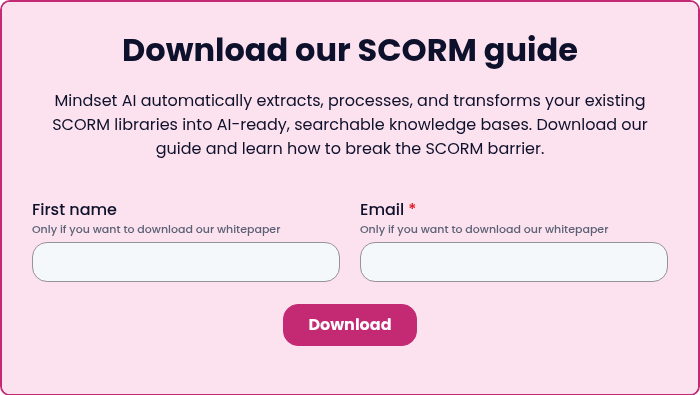
.png)
.png)
.png)
.png)
.png)
.png)
.png)
.png)
.png)
.png)
.png)
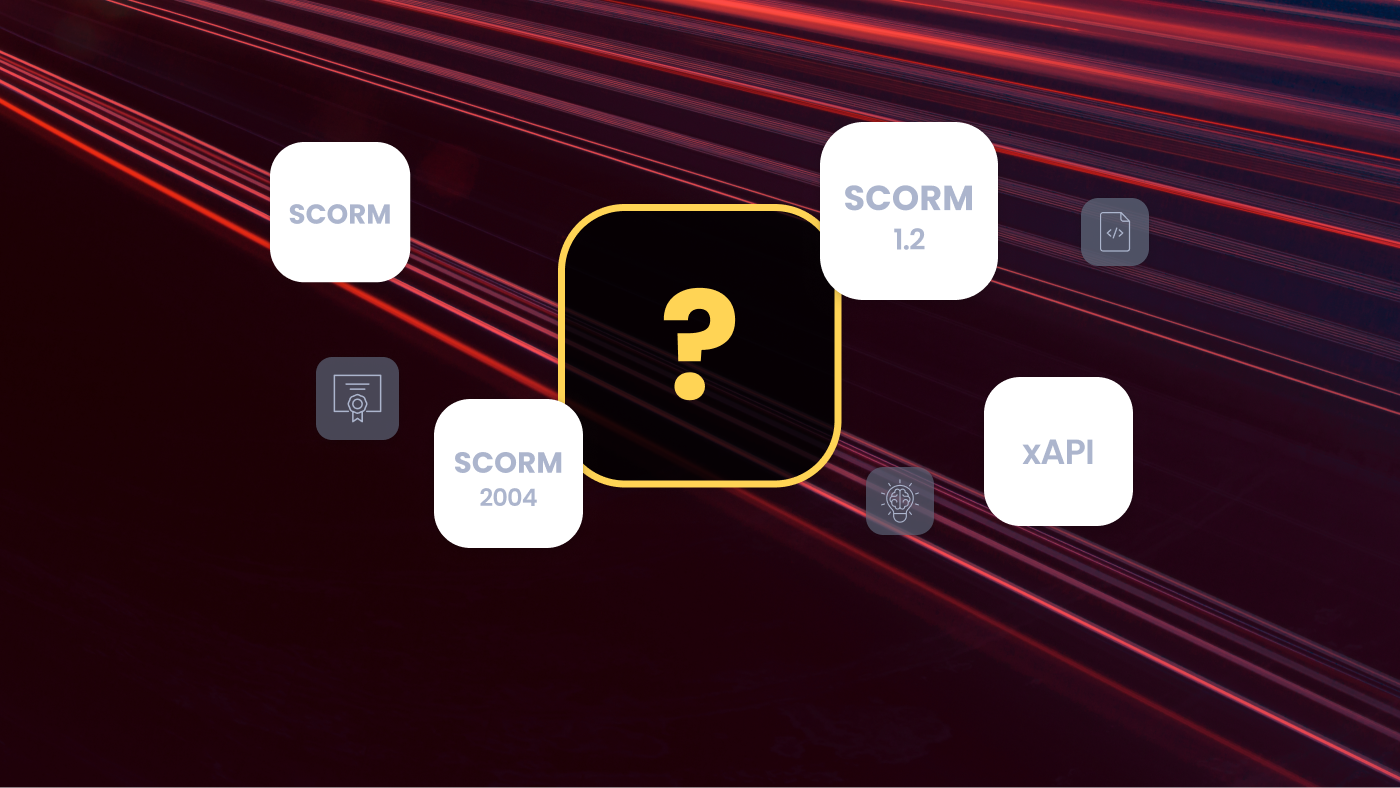
.png)
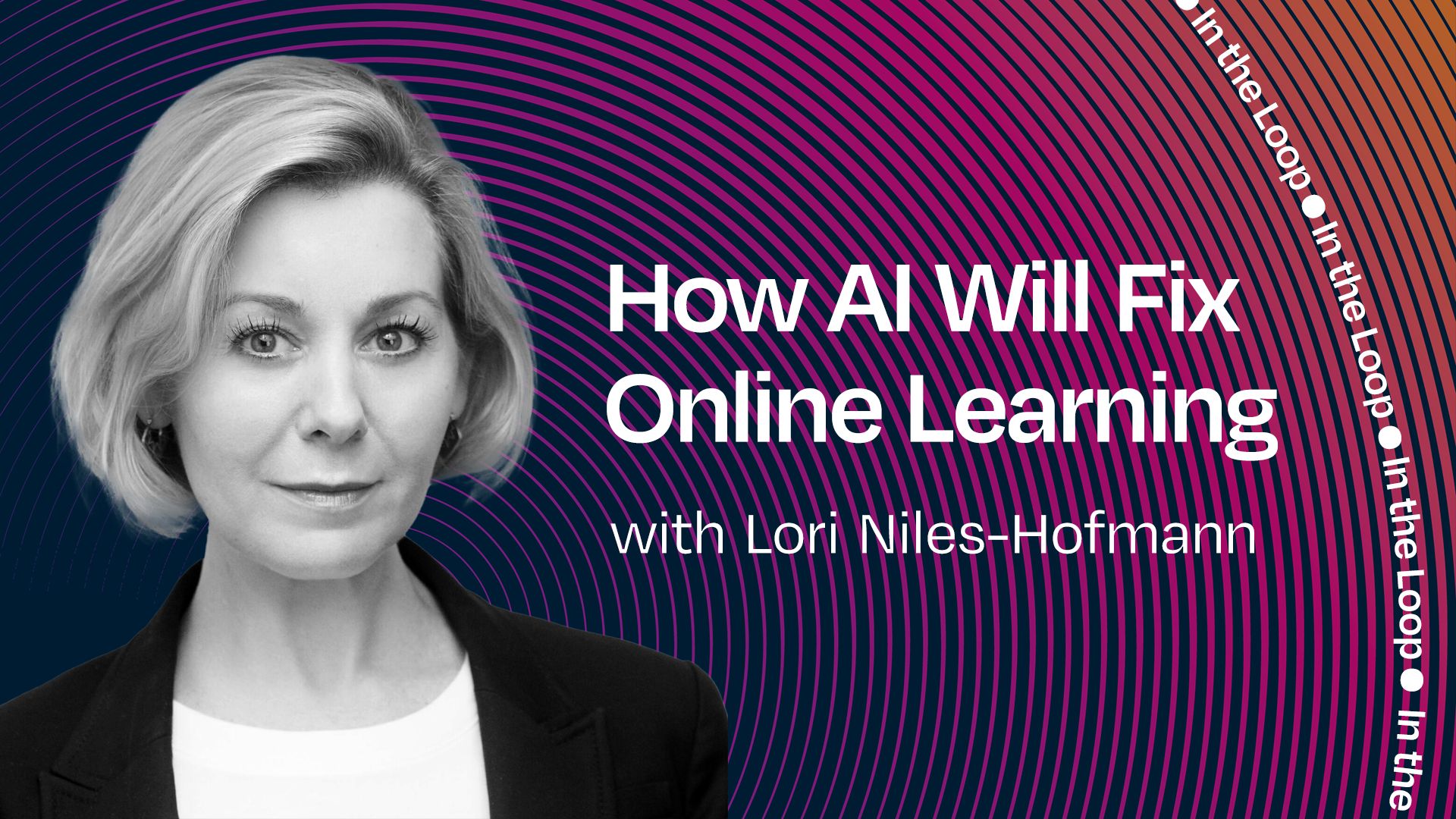
.png)

.png)
.png)
.png)

.png)
.png)


.png)
.png)
.png)
.png)
.png)
.png)

.png)
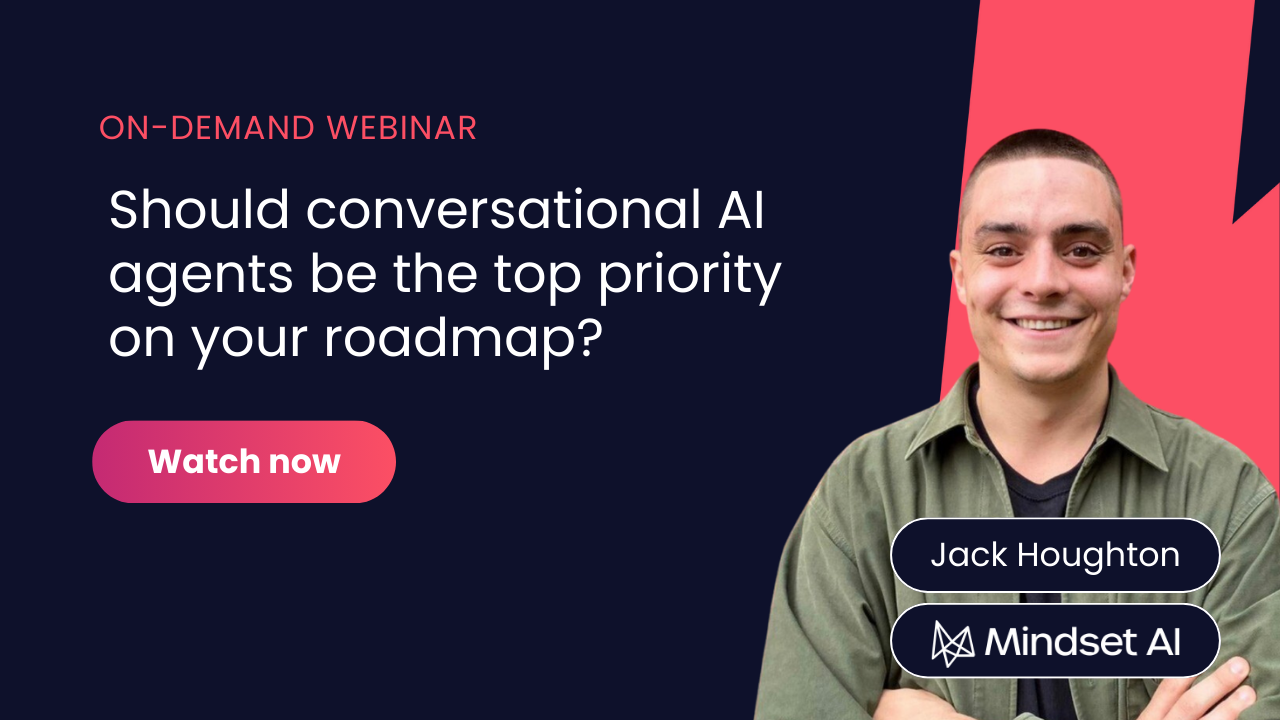
.png)
.png)
.png)
.png)

.png)
.png)


.png)
.png)
.png)

.png)
.png)
.png)

.png)
.png)
.png)



.png)






.jpeg)